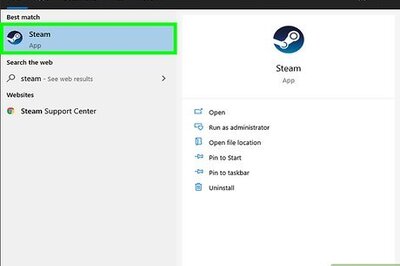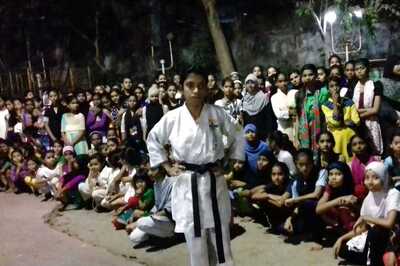
views
Chandrayaan-2 is making steady progress in its endeavour to head towards where no country has ever gone — the moon’s South Polar Region. This mission has a launcher, orbiter, lander and rover — all designed for India’s first soft landing on the lunar surface.
Launched on board ‘Bahubali’ GSLV Mk III, the Rs 603-crore rover will analyse minerals, map the moon’s surface and search for water. The mission is a sequel to the successful Chandrayaan-1, which orbited the moon in 2008 and helped confirm the presence of water on lunar surface.
As we inch towards unexplored territory, Padma Shri awardee and former Indian Space Research Organisation (ISRO) chairman Alur Seelin Kiran Kumar speaks to News18 about the lunar mission and how different is it this time.
Edited excerpts:
ISRO shared some stunning pictures of the Earth captured by Chandrayaan-2. How is the moon mission progressing?
I don’t want to say anything right now, not until the Vikram lander touches down. We are basically carrying forward the operations of Chandrayaan-1 with improved observation capability and using our own technology. And on the surface of the Moon, we will make observations from the lander and rover instruments only after one lunar day, i.e., 14 Earth days.
As you said we are carrying forward the mission of Chandrayaan-1, could you elaborate on the key differences between the two?
Key points of differences between the two missions are related to technology and instruments. In the former, we had an orbiter and Moon Impact Probe which went and crash landed on the moon. In Chandrayaan-2, we are trying to get the lander and rover touch down on the surface of the moon in the South Pole.
There are a set of instruments on both the lander and rover. The former is credited with the discovery of formation of water molecules on the surface. This time, we have built a spectrometer that operates in longer wavelength having better discernibility of water molecules. With improved technology and observatory, we are aiming to map the surface of the moon. There is a centre of tracking everything in Bengaluru.
With the Chandrayaan-2 progressing on its mission, you also feeling nostalgic about past endeavours?
India has demonstrated to the world that it can carry out planetary and astronomical missions in a significantly different way. Our ASTROSTAT Satellite that was launched in 2015 had a significant impact at the international level. It was registered globally because it carried in a single platform many observation capabilities in several wavelengths. Its far ultraviolet region carried world’s best telescope till date.
India carries out its space mission with lesser funds as compared to other countries.
Funding is an issue in every place. Here, we try to do it at a lower cost and achieve within that constraint. Our missions cost less when compared to international ones. Here, we have to make best use of limited resources available with us. In the US, they too find funds insufficient, they see it from their point of progress. You see, as you keep progressing, you keep needing more funds, and in that context, they too face constraints. They have a much larger canvas of activities and for that, they need more funds.
The mission is about the moon. Does this also bring poetry to ISRO or science?
Well, the aspect of poetry depends on individuals. There are poets and there are scientist who write poetry as well. We have a bunch of them who can write poetically about the work they are doing in ISRO. There is not much difference in the way poets and scientists see nature as both are keen observers. Only that poets use a certain kind of language that enthralls the reader.
Scientists capture certain aspects of nature and build a system that has some kind of functionality.
Don’t you think the role of women is not adequately celebrated in space missions?
We look at it differently. For us, the space missions are not about men and women, but as individuals with certain capabilities to perform. There is no discrimination and we have equal opportunities for both. The missions only run on skills and are based on the potential of an individual.
There was criticism over Sadhguru’s presence at the time of the launch.
Every citizen has a right to see the thing, no point raking up unnecessary aspects of Chandrayaan-2.
What would like to say about ISRO chief K Sivan’s visit to a mutt (religious institute) ahead of the launch?
No comments.




















Comments
0 comment